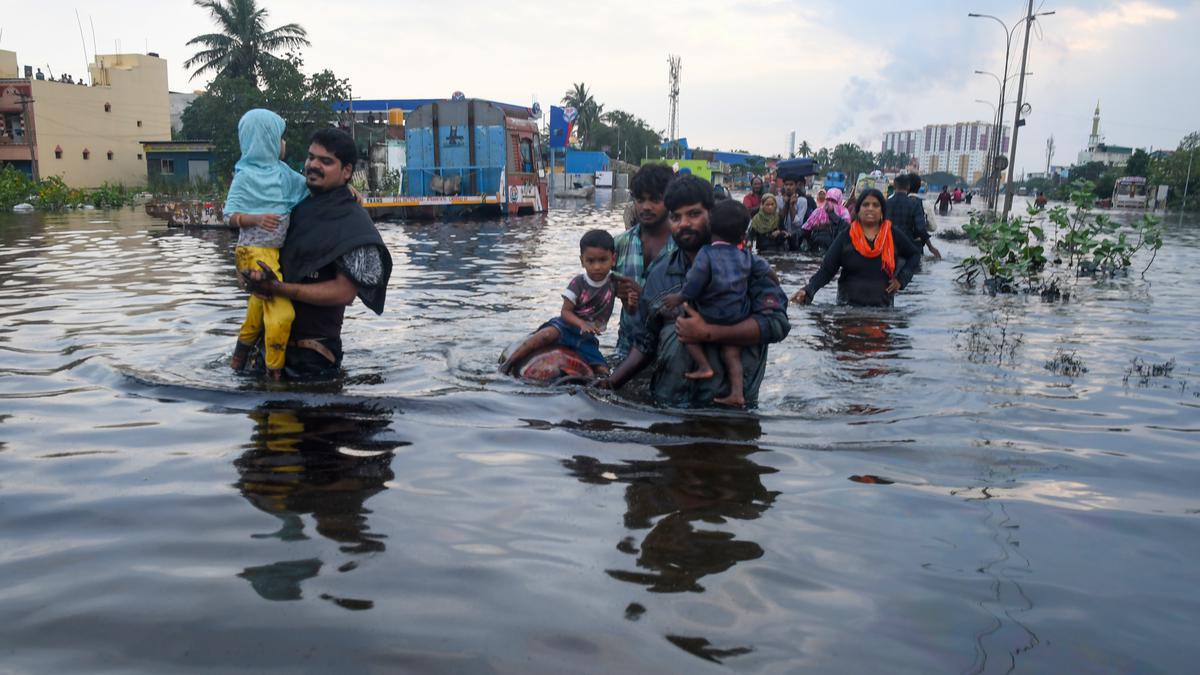
Why Chennai went under water again Premium
The Hindu
In the wake of the destruction caused by Cyclone Michaung, The Hindu Ground Zero looks at the woes of the people and the urgent need for the beleaguered coastal metropolis to be prepared for such disasters
On the gloomy morning of December 4, B. Jagadesan, 26, a resident of Pulianthope, a densely populated area in north Chennai in Tamil Nadu, grew increasingly alarmed. As sheets of rain pummelled the city, the water level in his neighbourhood rose rapidly. By noon, it had reached his waist, he recalls. And by the evening, Pulianthope looked like an island. “There was water up to the chest in some parts. And it was up to the neck in Pattalam (an adjoining area),” he says.
The next morning, there was an eerie calm after the storm. Cyclone Michaung, which had caused torrential rains from the night of December 3, had moved northwards. Jagadesan and his friends stepped out of their houses and waded through the murky water to reach Choolai, about 1.5 km away, to buy essential products.
“What was shocking was that half-a-litre milk packets that were brought in rickshaws to our area by some dealers cost ₹70 a packet, and then ₹100 the next day, three times the normal price,” he says. They had no choice but to buy the milk.
When Jagadesan and his friends surveyed parts of Pulianthope on that day and the next, the sun shone weakly in a dull grey sky. But the water had not receded. And there was still no help in sight. Jagadesan blames the faulty storm water drains and is upset with the State government. “No authority or elected representative has come to help us,” he says.
The people of Chennai are no strangers to waterlogged roads during the north-east monsoon every year. But the rains of December 3-4 wreaked widespread havoc in the city. Chennai’s Nungambakkam and Meenambakkam observatories recorded a staggering 46.8 cm of rain and 43.8 cm of rain, respectively, between December 3 and December 4 night.
The floods triggered by the cyclone claimed the lives of 17 people, left thousands stranded in water-logged areas, affected daily supplies, and uprooted numerous trees. The airport was shut for a day, trains were cancelled, and educational institutions were closed from December 4 to 8.
While the cyclone posed a daunting challenge for the authorities and the city’s strained infrastructure, it revived harrowing memories of a similar deluge in December 2015 for the residents.











